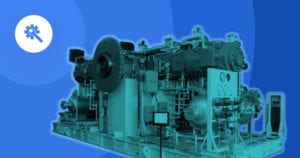
The use of IoT technology in smart buildings and facilities management applications is not new. The technology has been around for nearly a decade and was already used in facilities management before the COVID-19 era.
However, the COVID-19 pandemic has ushered in new IoT use cases and helped to unveil the full potential of IoT in facilities management. Therefore, we expect the rate of IoT deployments to be sustained or even increased during the new normal i.e., following the end of the pandemic.
IoT Deployments in Smart Buildings Pre COVID-19

In the pre-pandemic era, sensors and IoT technologies were deployed in use cases like energy optimization and intelligent asset management. For instance, temperature sensing was extensively employed in smart buildings towards fine-tuning the operation of HVAC (Heating Ventilation and Air Conditioning) systems in ways that optimized BTUs (British Thermal Units) consumption.
Likewise, facilities managers used to employ different types of sensors to monitor assets and to discover their possible malfunctions. In the pre COVID-19 era, sensors were usually deployed in all modern buildings as part of Building Management Systems (BMS).
On the other hand, several owners of older buildings were reluctant to ride the wave of IoT applications, as this required the installation of new sensors on legacy equipment. Some of them were concerned about the additional CAPEX (Capital Expenditure) investments and the overall ROI (Return on Investment) of their solutions.
IoT Deployments in Smart Buildings During COVID-19
Following the pandemic outbreak, facilities managers had to cope with new challenges stemming from COVID-19 measures and policies, including government-imposed restrictions.
For example, the pandemic disrupted conventional 9-5 working and office occupancy patterns, as most office workers switched to work-from-home. Moreover, physical activities (e.g., asset inspection) had to be transformed into digital ones (e.g., remote monitoring).
This gave rise to novel IoT use cases such as remote occupancy monitoring, remote and automated HVAC optimization, and predictive asset maintenance. These use cases helped employers save costs and boost their compliance with COVID-19 measures and mandates.
Furthermore, they manifested the ROI of IoT applications and created a new wave of IoT adopters, including owners and managers of legacy buildings.
IoT Deployments in Smart Buildings Post COVID-19
The post COVID-19 normality will introduce novel hybrid working patterns for office workers. These patterns will combine remote work with work at the office. Thus, the need for monitoring and analyzing occupancy patterns will persist. This will be a very good reason for using sensors and IoT technology.
Furthermore, many COVID-19 use cases (e.g., remote inspection and predictive maintenance) have business benefits that extend beyond needs that have arisen during the pandemic. For instance, predictive maintenance improves the utilization of building assets and equipment, beyond any remote monitoring benefits.
Similarly, HVAC optimization is not only about creating a safe and comfortable office environment. It also boosts the ability of building owners and facilities managers to catch ambitious sustainability targets as mandated by emerging “green” regulations (e.g., the 2020 New York City (NYC) Energy Code).
In this context, facilities managers that have already adopted IoT are expected to expand their IoT use cases. At the same time, a new wave of IoT adopters will emerge as IoT is one of the best-suited technologies for realizing the ongoing twin (i.e., digital + green) transformation of modern facilities.
Bottomline
Overall, while IoT applications in facilities management have been around for years, COVID-19 has accelerated IoT adoption. Moreover, it has unveiled new use cases, including use cases with significant ROI and importance in the new normality.
Some of these use cases will be used to support the safe return to the office. The latter signals a new transitional phase that bridges the COVID-19 era with the post COVID-19 normality.





 Related Podcast Episode
Related Podcast Episode




 Related Applications
Related Applications


 Latest IoT News
Latest IoT News







